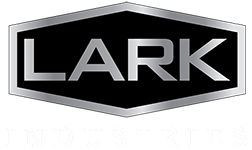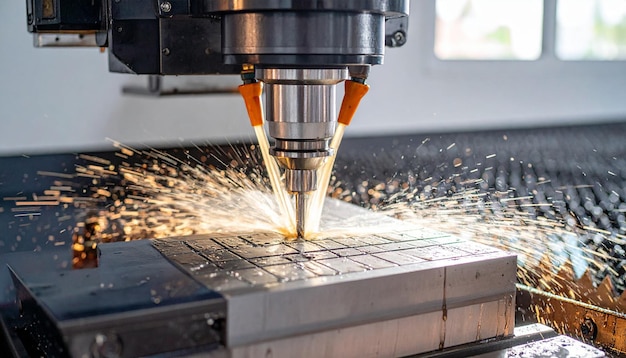In today’s fast-paced world, sustainability has become a key focus for businesses across various industries. Contract manufacturing is no exception. The drive for eco-friendly manufacturing and sustainable supply chains is transforming the sector, with companies striving to reduce their environmental footprint. This article explores the trends and best practices in sustainable contract manufacturing, shedding light on how businesses can implement green manufacturing practices to promote a more sustainable future. As the global community becomes increasingly aware of environmental issues, the pressure on companies to operate sustainably is mounting, making it essential for contract manufacturers to adapt to these changes not only to meet regulatory requirements but also to cater to a more environmentally conscious consumer base.
The importance of sustainability in contract manufacturing cannot be overstated. As industries evolve, so do the expectations of stakeholders, including customers, investors, and regulatory bodies. Sustainability initiatives are no longer optional but have become integral to business strategies. Businesses that ignore this shift risk falling behind their competitors, losing customer loyalty, and facing regulatory fines. Therefore, understanding and implementing sustainable practices in contract manufacturing is not just about preserving the environment; it’s about ensuring business resilience and growth in an increasingly eco-conscious market.
Sustainable contract manufacturing involves producing goods in ways that minimize environmental impact. This includes adopting energy-efficient processes, reducing waste, and ensuring that supply chains are sustainable. As consumers become more environmentally conscious, demand for products made with sustainability in mind is growing. Companies are responding by integrating eco-friendly manufacturing practices into their operations. This shift is not just about meeting consumer demand but also about anticipating future regulatory changes and staying ahead of industry trends.
Furthermore, the rise in sustainable contract manufacturing is driven by technological advancements that make it more feasible and cost-effective. Innovations in manufacturing technologies, such as 3D printing and smart factory systems, allow for more efficient use of resources and reduction in waste. These technologies enable manufacturers to produce goods with precision, reducing excess and ensuring that resources are used optimally. As these technologies become more accessible, the barrier to adopting sustainable manufacturing practices diminishes, encouraging more companies to make the transition.
Why Sustainability Matters
Sustainability is not just a trend but a critical component of modern manufacturing strategies. It offers numerous benefits:
- Brand Image: Companies that prioritize sustainability are often seen as more responsible and trustworthy, enhancing their brand image. This perception can lead to increased customer loyalty and a competitive edge in the market. In an era where brand reputation can make or break a company, aligning with sustainable practices can significantly boost a company’s profile.
- Cost Savings: Energy-efficient manufacturing processes can lead to significant cost savings over time. By reducing energy consumption and minimizing waste, companies can lower their operational costs, freeing up resources that can be reinvested into other areas of the business. Moreover, as the cost of energy continues to rise, companies that have already implemented energy-efficient systems will be better positioned to maintain profitability.
- Regulatory Compliance: With increasing regulations on environmental impact, sustainable practices help companies stay compliant. As governments worldwide implement stricter environmental policies, companies that have already adopted sustainable practices will find it easier to meet these new standards. This proactive approach not only ensures compliance but also reduces the risk of penalties and fines associated with non-compliance.
Key Trends in Eco-Friendly Manufacturing
Several trends are driving the shift towards sustainability in contract manufacturing:
Renewable Energy Integration
More manufacturers are incorporating renewable energy sources, such as solar and wind, into their operations. This shift not only reduces carbon emissions but also decreases reliance on non-renewable energy sources. By harnessing renewable energy, manufacturers can achieve greater energy independence and reduce their vulnerability to fluctuations in energy prices. This transition also aligns with global efforts to combat climate change, positioning manufacturers as leaders in sustainability.
Renewable energy integration is not just limited to large-scale operations; even small and medium-sized enterprises are finding ways to incorporate these technologies. Government incentives and decreasing costs of solar panels and wind turbines have made it more accessible for businesses of all sizes. As a result, a growing number of manufacturers are exploring partnerships with renewable energy providers, further accelerating the adoption of clean energy solutions in the industry.
Circular Economy Practices
The circular economy model emphasizes reducing waste by reusing and recycling materials. Contract manufacturers are adopting these practices to decrease the environmental impact of their production processes. By designing products with end-of-life considerations in mind, manufacturers can ensure that materials are kept in use for as long as possible, reducing the need for new resources and minimizing waste.
In addition to reusing and recycling materials, the circular economy approach encourages manufacturers to rethink product design and production processes. This involves developing new business models, such as product-as-a-service, where products are leased rather than sold, allowing manufacturers to retain ownership and responsibility for their lifecycle. Such models promote sustainability by encouraging manufacturers to design durable, repairable, and upgradeable products, further reducing environmental impact.
Advanced Technologies
Technologies like the Internet of Things (IoT) and Artificial Intelligence (AI) are enabling manufacturers to optimize energy usage and streamline production, resulting in more sustainable operations. IoT devices can provide real-time data on energy consumption, allowing manufacturers to identify inefficiencies and implement corrective measures. AI, on the other hand, can predict maintenance needs and optimize production schedules, reducing downtime and enhancing efficiency.
Moreover, advanced technologies enable manufacturers to gain deeper insights into their supply chains, identifying areas for improvement and ensuring sustainability at every stage. By leveraging big data analytics, manufacturers can track and monitor their environmental impact, making informed decisions that align with their sustainability goals. As these technologies continue to evolve, their potential to drive sustainable manufacturing practices will only increase, offering new opportunities for innovation and efficiency.
Best Practices for Green Manufacturing
To achieve sustainable contract manufacturing, companies can implement several best practices:
Energy Efficiency
Focusing on energy-efficient manufacturing is a cornerstone of sustainability. This can include upgrading machinery to more energy-efficient models, implementing smart energy management systems, and optimizing production schedules to reduce energy consumption. Energy efficiency initiatives not only reduce environmental impact but also enhance operational performance, leading to improved productivity and cost savings.
In addition to upgrading equipment, manufacturers can implement behavioral changes to promote energy efficiency. This might involve training employees on energy-saving practices, such as turning off machinery when not in use and optimizing lighting in production areas. By fostering a culture of sustainability, manufacturers can engage their workforce in energy efficiency efforts, ensuring that everyone plays a role in reducing the company’s energy footprint.
Sustainable Materials
Using sustainable materials is essential for eco-friendly manufacturing. This involves selecting materials that are recyclable, biodegradable, or sourced from renewable resources. By prioritizing sustainable materials, manufacturers can reduce their reliance on finite resources and minimize the environmental impact of their products.
Incorporating sustainable materials requires collaboration with suppliers to ensure that raw materials meet environmental standards. Manufacturers must conduct thorough assessments of their supply chains, identifying opportunities to source sustainable alternatives and working with suppliers to develop innovative solutions. This collaborative approach not only strengthens supply chain relationships but also enhances the overall sustainability of the manufacturing process.
Waste Reduction
Reducing waste is crucial for minimizing environmental impact. Manufacturers can achieve this by optimizing production processes, recycling scrap materials, and implementing waste management systems that prioritize reduction and reuse. Waste reduction efforts contribute to resource conservation and can lead to significant cost savings, enhancing both environmental and financial performance.
Manufacturers can also explore opportunities to engage with external partners in waste reduction initiatives. For example, partnerships with recycling companies can facilitate the recovery and reuse of materials, diverting waste from landfills and supporting a circular economy. By collaborating with stakeholders across the value chain, manufacturers can amplify their waste reduction efforts and contribute to broader sustainability goals.
Sustainable Supply Chains
by Sigmund (https://unsplash.com/@sigmund)
Building a sustainable supply chain involves working with suppliers who prioritize sustainability. This includes ensuring that raw materials are sourced ethically and that suppliers adhere to environmental standards. By fostering strong relationships with sustainable suppliers, manufacturers can enhance the overall sustainability of their operations and reduce their environmental footprint.
A sustainable supply chain requires transparency and accountability at every stage. Manufacturers must implement systems to monitor supplier performance and ensure compliance with sustainability standards. This might involve conducting regular audits, setting clear expectations for suppliers, and collaborating on sustainability initiatives. By taking a proactive approach to supply chain management, manufacturers can mitigate risks and drive positive environmental outcomes.
Challenges in Implementing Sustainable Practices
While the benefits of sustainable contract manufacturing are clear, there are challenges to consider:
Initial Costs
Investing in sustainable technologies and practices can require significant upfront costs. However, these investments often lead to long-term savings and benefits. While the initial financial outlay may be daunting, companies that commit to sustainability can achieve a competitive advantage through reduced operational costs and enhanced brand reputation.
To overcome the challenge of initial costs, manufacturers can explore various financing options, such as government grants, subsidies, and green loans. These financial instruments can alleviate the burden of upfront investments, making it more feasible for companies to adopt sustainable technologies. Additionally, manufacturers can prioritize incremental changes, gradually implementing sustainability initiatives to spread costs over time.
Complexity of Supply Chains
Managing a sustainable supply chain can be complex, especially for manufacturers with global operations. Ensuring that every link in the chain adheres to sustainability standards requires careful planning and coordination. The complexity of supply chains can pose challenges in terms of monitoring supplier compliance and maintaining visibility across multiple tiers.
To address these challenges, manufacturers can leverage digital tools and technologies to enhance supply chain transparency and traceability. Blockchain technology, for instance, can provide an immutable record of transactions, enabling manufacturers to verify the sustainability credentials of their suppliers. By adopting such technologies, manufacturers can streamline supply chain management and ensure alignment with sustainability objectives.
Measuring Impact
Quantifying the impact of sustainable practices can be difficult. Manufacturers need reliable metrics and reporting systems to assess their environmental performance accurately. Without standardized metrics, it can be challenging to demonstrate the effectiveness of sustainability initiatives and communicate progress to stakeholders.
To address this challenge, manufacturers can adopt established frameworks and standards for sustainability reporting, such as the Global Reporting Initiative (GRI) and the Carbon Disclosure Project (CDP). These frameworks provide guidelines for measuring and reporting environmental impact, enabling manufacturers to track their performance and identify areas for improvement. By adopting a systematic approach to measurement and reporting, manufacturers can build credibility and transparency in their sustainability efforts.
Case Studies in Sustainability
Several companies have successfully integrated sustainability into their contract manufacturing processes:
Patagonia
Outdoor apparel company Patagonia is a leader in sustainable manufacturing. The company uses recycled materials, prioritizes fair labor practices, and works to minimize its environmental footprint throughout its supply chain. Patagonia’s commitment to sustainability extends beyond its products, as it actively engages in environmental advocacy and supports grassroots organizations working to protect the planet.
Patagonia’s approach to sustainability is multifaceted, involving initiatives to reduce water usage, eliminate harmful chemicals, and promote product repair and reuse. By adopting a holistic approach to sustainability, Patagonia has not only reduced its environmental impact but also built a loyal customer base that values its commitment to social and environmental responsibility.
Unilever
Consumer goods giant Unilever has committed to halving its environmental impact while doubling its business. The company has implemented various sustainable manufacturing practices, such as reducing water usage and increasing energy efficiency. Unilever’s sustainability strategy is embedded in its business model, driving innovation and creating value for both the company and its stakeholders.
Unilever’s efforts extend across its entire value chain, from sourcing raw materials to the end use of its products. By collaborating with suppliers, customers, and other stakeholders, Unilever has developed innovative solutions that enhance sustainability and drive business growth. The company’s success in integrating sustainability into its operations serves as a model for other manufacturers looking to achieve similar outcomes.
The Future of Sustainable Contract Manufacturing
The future of contract manufacturing is green. As technology advances and consumer demand for sustainable products grows, manufacturers will continue to innovate and adopt eco-friendly practices. By prioritizing sustainability, companies can not only reduce their environmental impact but also drive growth and ensure long-term success. The transition to sustainable manufacturing is not a one-time effort but an ongoing journey that requires commitment, collaboration, and continuous improvement.
In conclusion, sustainable contract manufacturing is more than just a trend—it’s a necessary shift towards a more responsible and eco-friendly industry. By embracing renewable energy, advanced technologies, and sustainable supply chains, manufacturers can play a pivotal role in promoting a greener future. As these practices become the norm, the industry will continue to evolve, paving the way for a more sustainable world. The potential for innovation and positive change is immense, and as manufacturers rise to the challenge, they have the opportunity to contribute to a more sustainable and prosperous future for all.





